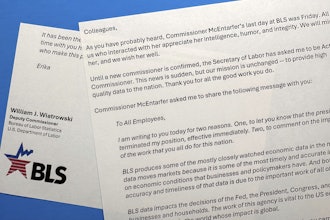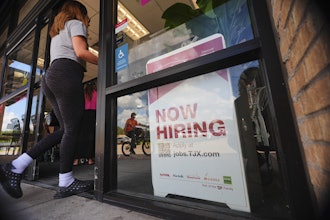
 Bulent Osman
Bulent OsmanThe manufacturing industry has an employee engagement crisis. While this may sound dramatic, the statistics prove that manufacturers in both the U.S. and UK are facing epidemic levels of disengagement. In Gallup’s 2017 State of the American Workplace report, manufacturing employees weigh in as the least engaged occupation, with a dismal 25 percent of employees engaged. (This is even lower than the 33 percent national average.)
And in the UK, the Workforce Institute at Kronos by Coleman Parks reported that just over one-third (35 percent) of UK manufacturers report having strong employee engagement. Sixty percent of manufacturers in the UK report that their workers’ productivity isn’t strong.
Production Paradox
It may seem incongruous that an industry that’s synonymous with innovation and optimization, research and development, and a never-ending search for process improvements has low engagement levels. But the fact remains that this sector, which one would imagine workers would find exciting and rewarding, instead suffers from subpar levels of employee engagement. It goes to show that while an industry may take a leadership role in advanced technologies within its core business, that doesn’t mean it’s maximizing innovative technology solutions in equally important arenas, such as employee engagement.
What’s behind these disturbing trends? A peek behind the curtain at some of the issues manufacturing companies face helps to clarify why engagement has become such a challenge. The Workforce Institute identified several issues that impact manufacturing workers, and topping the list we find cost control measures to keep production expenses as low as possible. This often translates to low wages and long hours for workers. There’s also a shortage of skilled workers in the industry, making it tough to attract and retain talent. Manufacturing workers have many other competitive pressures as well, which include minimizing lead time, improving productivity, and increasing agility in the face of frequent mergers and fluctuating consumer demand.
Reversing the Trend
But the manufacturing sector is in no position to bemoan these industry realities. Manufacturers instead need to become solutions-oriented if they want to avoid potentially serious consequences from letting their engagement levels continue to languish. These consequences include everything from loss of productivity and business disruption to lost income and earnings growth.
And manufacturers have another good reason to focus on increasing engagement: safety issues. While employee safety incidents gradually declined over the past few years, disengaged workers are more likely to compromise worker safety. A 2016 Gallup report found that highly engaged firms saw 70 percent fewer incidents related to safety compared with less engaged manufacturers.
Absenteeism is another engagement-related issue. Gallup found that when business units have higher engagement, they experienced lower rates of absenteeism and turnover and not surprisingly outperformed those with lower engagement in profitability and productivity by 22 percent and 21 percent, respectively. The business case for increasing engagement ends with the bottom line, since the financial impact of low worker engagement is significant and verifiable. Towers Perin research emphasizes that companies with low engagement experience a 33 percent drop in operating income as well as an 11 percent drop in earnings growth.
Capitalizing on Connection
Fortunately, there’s something that manufacturers can do right away to increase engagement throughout their workforce—and given that the industry is already a leader in deploying advanced technologies for making products, this should be a no-brainer to incorporate. The solution is mobile technology, since this is the only tool that can truly connect everyone in the manufacturing workforce, including non-desk employees who work remotely, and may not necessarily have email access.
When manufacturers provide their workforce with a mobile engagement platform, employees gain access to the resources they need for premium communication and engagement with peers as well as with managers. That’s because integrated mobile engagement facilitates both receiving information and sharing feedback across teams, whether or not they are co-located.
Employee engagement platforms can provide many benefits to employees and manufacturers alike, and this technology has the potential to help the entire industry turn around its reputation for poor engagement. Some of the top advantages of mobile engagement apps include:
- Building community. When you use a platform based around communities, it’s an automatic morale booster since it encourages user-generated content that can help create connections and positivity companywide. Mobile-enabled apps can provide workers onsite as well as remote employees with the ability to share, discuss, and interact with user content and company messaging while connecting within their defined communities.
- Sharing both ways. Workers will tune out and disengage from a system that gives them no voice. Unlike one-way communication that goes only from management to workers without soliciting input or feedback, mobile engagement platforms can keep people in the loop and make them feel valued, since even distributed teams can share information and give feedback as well as receive it. Some mobile platforms even include the ability for workers to access company updates via broadcast to the app’s home screen.
- A focus on users. A personalized look and feel helps a mobile app become “sticky” for employees, so that they want to return to the platform again and again. Employee mobile apps put the user front and center through their very design, providing things workers need to do their jobs better, from gamification and social media interactivity to calendaring and connection to senior management.
- Measurement capabilities. Without a way to effectively measure employee interaction with content and capture feedback on different types of organizational messages, manufacturers can’t make optimum use of the employee feedback they gather through the app’s ability to administer mobile quizzes and surveys. One of the most valuable components of a mobile engagement platform is being able to measure their workforce’s current engagement levels, and then use this information to make cultural and operational adjustments over time as needed.
By helping manufacturers build an emotional, two-way connection with their entire workforce, mobile platforms can effectively influence engagement for the better. When manufacturing workers experience the feeling of being a part of something greater than themselves by interfacing with their managers and colleagues via the platform, then they’ll want to connect, engage, and positively promote the organization, becoming true advocates for its brand.
Bulent Osman is CEO and Founder of StaffConnect.























